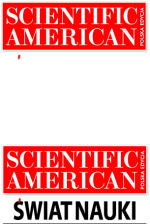 2006
2006
 2008
2008
 2010
2010
 2012
2012
 2014
2014



 |
Amphibians – endangered guardians of wetlands
‘The role of amphibians in the conservation of biodiversity of wetlands in the Upper Silesia’
Piotr Cuber – author of photographs / project manager Sleeping beauty – common toad, Rogoźnik, 17.04.2006 |

|
Description popularizing the research project
They seem to be the most defenceless of all animals. Amphibians are surely the last among Polish vertebrates in terms of the armament. They do not have claws to tear apart their prey or opponent. They do not have stings to inject paralyzing venom. Their jaws are pathetic as they are not full of sharp teeth, just small ones at most. Their bodies are not protected nor with a hard armour, nor with spikes. Their protection is most often camouflage, or, more rarely, ability to escape in a split second. Common Spadefoot can dig into the ground quickly. Fire salamander through its aggressive colours suggests that caution is advised. Fire-bellied toads act similarly. When in danger they expose warning colours on their belly. Both salamanders and the toads send the warning for a reason as their skin contains strong venom against a potential predator. Other amphibians can escape or stay still. These inconspicuous creatures may yet secure survival of many other better-armed animals. It is not due to their amphibian arsenal, which is rather poor compared to others. The reason why amphibians are treated as umbrella species is the fact that in Poland all of them are protected species. The legal protection provided to them means absolute immunity throughout their lives and conservation of their habitats. The ecosystems, mud and water indispensible for amphibians, are inhabited by other animals too, at least at some stage of their life. Presence of amphibians ensures survival of the species on which frogs, toads, newts and their tadpoles feed. The total number of eighteen species of Polish amphibians seems as unimpressive as the armament at their disposal. In spite of that, each of them may be a warrant of high biodiversity in humid habitats of Upper Silesia.
Abstract
Currently, biodiversity is considered at three main levels of organization of life: genetic, species and ecosystemal. The benefits of biodiversity preservation are not only material but also spiritual and intellectual. The studies were conducted within the framework of a thesis performed at the Department of Zoology, Faculty of Biology and Environmental Protection, University of Silesia. The aim of the study was, among others: to present the diversity of life within the precious amphibian breeding sites, highlight the role of amphibians in the water ecosystems - wetlands and the importance of wetlands to the environment and humans, as well as present real threats to biodiversity in the studied areas. Materials and methods. Eighteen sites covering different types of wetlands within Upper Silesia were selected for the studies. The material was collected in two seasons (2005 and 2006). The study included different groups of organisms. In case of dragonflies, amphibians and birds only field observations were applied, aquatic snails were collected and preserved. In most cases photographic documentation was applied besides notes. Results. The sites revealed presence of 12 species of amphibians: great crested newt, smooth newt, fire-bellied toad, spadefoot toad, green and common toad, tree frog, pool frog, marsh frog, edible frog, common frog and moor frog. The only amphibian that despite favorable conditions was not found was the natterjack toad. Among the most interesting and often extremely endangered species observed at the sites of life and reproduction of amphibians, were: little bittern, whiskered tern, large white-faced darter and golden-ringed dragonfly. Amphibians can be used successfully as umbrella species for different types of wetlands. Each of the sites included within the research was valuable, because they are inhabited by a specific mix of species and populations with a unique gene pool for each habitat. These gene pools are the source of biodiversity.
Patronat honorowy
Leszek Jodliński
Dyrektor Muzeum Śląskiego w Katowicach
Zygmunt Łukaszczyk
Wojewoda Śląski
Jan Malicki
Biblioteka Śląska
Piotr Uszok
Prezydent Katowic
Adam Matusiewicz
Marszałek Województwa Śląskiego














